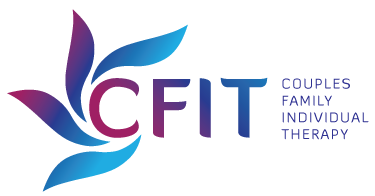How Joy is Essential to the Bereavement Process
When confronting grief, the groundbreaking book On Death and Dying, by Elisabeth Kubler-Ross noted three key stages (anger, bargaining, and depression) to work through in order to find solitude and acceptance following the loss of a loved one. Many clinicians believe that hope and JOY are crucial to experience simultaneously during the grieving process.
When we confront anger, we are typically admitting that we hurt, are disappointed, worry, or feel scared facing the uncertainty of how to cope with the loss. Anyone who recently lost his or her life partner now has to discern how to live life as a single rather than as a couple. And that’s really hard and especially in the beginning, painful, and at times, just maddening! At times, the grieving person lashes out at a loved one or close friend unexpectedly. The angry rages can leave the grieving person rather isolated when anger is the focus rather than expressing the hurt, disappointment or sadness that triggers the anger.
When we bargain, we offer other options to God, or often make promises to change poor behavioral patterns to make the grief go away. Sometimes a widow(er) questions moving forward, and that person may encounter self-destructive thoughts. Persons struggling with grief may avoid triggers of holidays, birthdays, or anniversaries that seem impossible to face without the person who died. Maintaining hope and perception of a happy future is key to working through the bargaining phase.
There is such profound sadness associated with death, the depression tempts those most affected by the loss to isolate and shut out others willing to spend quality time. In the midst of sorrow, depression may also lead to under-eat, over-eat, or get intoxicated. What does it take to move past the depth of grief?
Recall the most recent memorial service you attended. When those gathered shared stories about the person who died, our tears of sadness were then mixed with smiles, laughter, and lots of wonderful memories. We began to focus on past events of happiness, where there is NO guilt or shame in recalling those who have died with JOYFUL feelings when remembering how that person enriched our life. That’s preparing the way forward following loss; experiencing joy during the process is crucial to the healing process.
Consider the following recommendations:
1. Converse with a loved one or close friend, preferably in person, and have them remind you why you are loved, what value you bring to their life, and then accept a hearty embrace following the affirmations.
2. Listen to inspiring music… whether classical, pop, r&b, gospel, or rap makes you smile. What music can you play to during the day to evoke joy?
3. Break bread with three, four or five of your circle of friends one evening later this week engaging with deep meaningful and spiritual conversations. Fellowship yields joy!
4. Think about a recent time that you made a customer or colleague smile on the job. Customer service seems to be a lost art; challenge yourself to give great service to a customer or colleague and feel the joy associated with the outcome.
5. Crisis responders inform clients to maximize the “news” to no more than one hour daily. So whether you get your information from CNN, Fox, MSNBC, or Facebook (and the Russian hackers), put a cap on the news applications, put the cell phone down and turn to joyful things.
6. When you wake up, will you reviewing a faith-based meditation or you will flip on the TV to Morning Joe? People often learn from the daily readings and reflections year after year, especially those that evoke joyfulness
7. Have you recently put your feet in the sand and surf of the ocean? We are so fortunate to live in South Florida where the ocean is just minutes away! When you go, notice the puffy clouds, the tiny sand creatures, the beautiful birds, or if went go the beach at night, bathe in the stunning moonlight and thank God for this amazing creation! That’s joyful.
Grieving is quite challenging. Surrounding yourself with loved ones who will comfort you through the rough patches, and collaborate with you when you are ready to engage in activities that bring back a sense of “everyday normal” as well as begin to bring back a smile to your face and joy to your heart.

